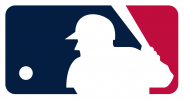Bryce Harper came into 'The Show' as one of the most hyped prospects in baseball history. He graced the cover of Sports Illustrated at the ripe age of 16, was the No. 1 overall pick in the 2011 MLB Draft, was ranked the top prospect by Baseball America in both 2011 and 2012, and he made his much-anticipated Major League debut at the age of 19.
However, while he showed plenty of promise and at times was downright awesome, he never really put it all together. Until this year.
This year has been a completely different story.
Look at the leader board for basically any hitting category, and you will find Harper’s name somewhere near the top—if not the top.
How has he done it? What has he done differently this year that has allowed him to transition from the “overrated” label to one of the game’s premier sluggers?
It doesn't have anything to do with a mechanical change in his swing; his swing has always been and probably always will be a thing of beauty—a perfect mix of control and violence.
It has to do with a very minor change in his approach. No longer is he hacking at the first pitch with such regularity—before this season, it was 40 percent, according to Eno Sarris of FanGraphs. Harper is showing much more patience this year, which has produced phenomenal results.
Through July 31st, he possessed a comfortable MLB lead in wRC+, wOBA, slugging percentage and offensive, as well as overall wins-above-replacement (WAR), per FanGraphs. And after his two-homer outburst against the Marlins on Wednesday, he leads the National League in home runs,—trailing only Mike Trout and Albert Pujols for the Major League lead—runs scored, and is third in RBI.
He also leads all of baseball in Baseball-Reference’s OPS+ with a whopping 215. OPS+ is an advanced stat that takes all hitting stats and puts it into one number that is adjusted to ballpark factors. To put Harper’s number in perspective, Jose Abreu led MLB last year with an OPS+ of 175.
Now, back to the more patient approach that he has showcased in 2015.
It’s not necessarily that he is walking more, although he does currently sport a career-high walk rate that has contributed to his terrific .463 on-base percentage, which trails Paul Goldschmidt by one point for the MLB lead. And it’s not simply that he is taking more pitches, though his swing and chase percentages are both at career lows, per FanGraphs.
How about we hear from the man himself?
“I’m trying to be quick, not as strong, do what I can to connect to the baseball, see my pitches, draw my walks if I need to,” Harper told Tom Schad of the Washington Times back in late April. “If they’re not giving in, keep throwing me off-speed or off the plate or anything like that, don’t chase. If you strike out on a good pitch, it happens. But draw your walks, try to get good pitches, and don’t miss ‘em.”
After he smashed two round-trippers that landed in the second deck of Marlins Park, he echoed a similar tune.
“I’m just trying to stay within myself and have good at-bats,” Harper said via Chelsea Janes of the Washington Post.
While walking more and swinging less, his more advanced approach is allowing him to wait for his pitch. His pitch, one that he can inflict serious damage on.
If there is one thing that Harper is great at, it is the ability to demolish baseballs. Take a look at what he did against the Miami Marlins back in May where he mashed three home runs in one game.
Remember when I said he was being more patient? He is, but as you saw here, he certainly has the ability to pull the trigger in any count and send it deep into the seats.
To this point in the season, balls are flying off Harper’s bat at a blazing average speed of 90.93 mph, according to Baseball Savant. He has made hard contact 40.7 percent of the time, according to FanGraphs’ batted ball tracker, which puts him seventh in the league in that regard.
And not only has he made all kinds of hard contact, he has also been hitting the ball in a way that maximizes his already-massive power. His line drive and fly ball percentages are at a career high, and his ground ball percentage is at a career low.
So he is hitting the ball harder than he ever has in his four-year MLB career, and he is hitting it on a line or in the air while keeping it off the ground.
Finally, Harper is still going to improve. While it is easy to think of him as an experienced veteran already, he is only 22-years-old. That makes him four months younger than Kris Bryant and six months younger than Joc Pederson, both of whom are competing for the National League Rookie of the Year.
Harper is still very young, and he has put it all together this year for the first time. He has blossomed into arguably the game’s best hitter, and he is only going to get better.
As long as he remains patient and keeps waiting for his pitch—whether that’s the first pitch, the seventh pitch, or no pitch at all—he will continue to be an on-base king as well as one of the game’s most redoubtable sluggers for years to come.










































